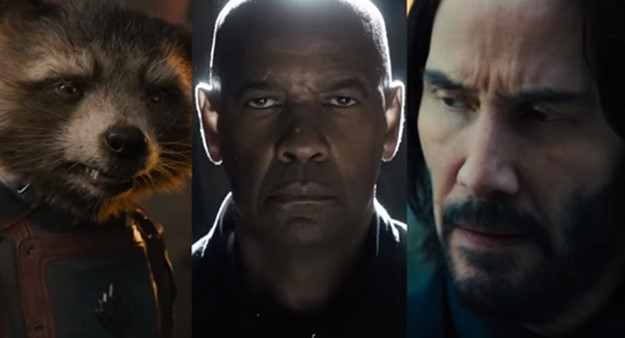Movies talk to each other. What did the films of 2023 have to say? This is a look at how three movies from the past year tackle similar subjects in different ways. Be warned, SPOILERS for John Wick: Chapter 4, Guardians of the Galaxy Vol. 3 and The Equalizer 3 follow.
Action in the movies — races, chases, fights, violence — never gets old. But the stars and filmmakers of action movies do, as do the franchises they wind up helming. Three action series that began in 2014 put out new installments last year, with a decade of wear and tear behind them. But some of them still tried to keep their cool.
When we last checked in with John Wick, he was barely alive after a brutal fight and more crucially worn down by the baroque machinations of his movies’ plots, full of important alliances the audience had never heard of before and increasingly complicated vengeance instead of a man mad that some goons killed his dog. John Wick: Chapter 4 does not let up in this regard, but it also finds interesting fillips in its complication. It has fixed the baroque by going rococo and having fun with the bits outside Wick and whatever fetch quest he’s on. The goofiest example of this is DTV action star Scott Adkins, whose gutter brutality provided a counter to Wick’s entropic action a few years ago, covering his chiseled physique with a giant fat suit but using his athleticism to pummel the shit out of Keanu Reeves. This is both solid action and very silly, and one of the movie’s most renowned setpieces is just straightforward comedy — Wick fights his way up the Sacre Coeur stairs in Paris only for Reeves’ stunt double Vincent Bouillon to be booted back down them like Laurel and Hardy’s piano.
But the best side action belongs to Donnie Yen as a blind assassin whose legend rival’s Wick’s. Yen’s abilities as a martial artist are superb but his charisma is what makes his character (named Caine, of course) so much fun to watch — the mix of calm and confidence verging on annoyance at the goons in his way, and the slyness in his dark glasses and cane seeming to signify a target when the audience knows that he is going to absolutely wreck some dudes. His style is impeccable, he is incredibly cool.
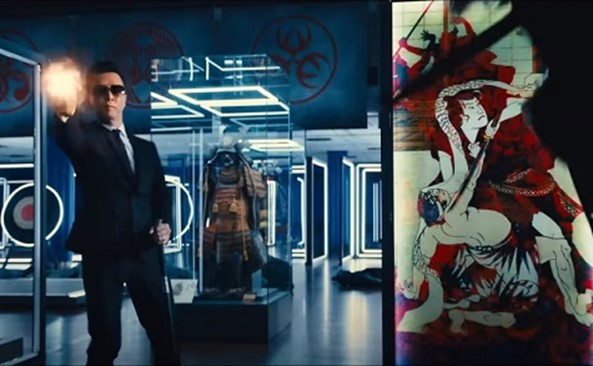
John Wick himself is less cool. Part of this is by design — Reeves plays a guy who is both angry and tired, who barely speaks throughout the movie and who accepts his death at Yen’s hands at the end as a way to finally find peace. But when he is not engaged in one-on-one combat he is also trapped in the series’ gun-fu, a style of fighting that venerates quick and merciless firearm action. This was incredibly cool when first deployed in the original movie, the ruthless precision of the Terminator incarnate in an extremely pissed-off man, but has become less and less interesting as the series goes on because the violence ultimately requires the bridge of a bullet. Jackie Chan can spend five decades hitting dudes and his inventiveness aside, dudes are being hit, the thrill of interpersonal violence remains. Gun violence is its own thrill — to invoke Arnold again, Commando is a fucking blast — but the choreography of gun-fu becomes antiseptic the more it is indulged (its ideal realization may have occurred a decade before the first John Wick, with Tom Cruise icing two guys in two seconds in Michael Mann’s Collateral).
The worst thing I saw in the theater last year was one of the more celebrated sequences in John Wick Chapter Four — an unbroken two-minute shot of Wick moving through a bunch of rooms in a large building, laying waste to dozens of goons. The camera pulls back as Wick comes up a staircase and then hovers over the floor plan, moving with Wick in and out of rooms and keeping a perspective close to but not quite a full 180 degree birds-eye view. It is immediately recognizable, even to someone like me whose last significant experience with computerized gunplay was Goldeneye on the N64, as the aesthetic of a videogame. Which videogame was initially a matter of debate, Hotline Miami was cited by fans before Wick director Chad Stahleski claimed the more obscure Hong Kong Massacre was the inspiration. Whatever the genesis, it led to a shot that is undeniably accomplished and artistically bankrupt. Armond White accurately described Wick’s action as “antipathetic video-game artifice”; he meant that as praise for its catharsis but this aesthetic gives no pity or terror. The videogame remove of the camera is joined by a similar distancing of sound, the gunfire and screams of victims mixed clearly but lower in overall volume — a guy running around on fire hollering in agony is vaguely comical, a nuisance. To be perfectly clear: This is not a moral concern, fuck that guy. But aesthetically, it is empty and uncool. What this creates in a videogame is a minor stimulus to be discarded so the player can focus on the next dude to shoot, but a movie doesn’t have a player. It has a viewer. The viewer of this scene perceives action without the thrill of actually watching it or acting on it themselves. They have a god’s-eye view without the ability of a god or even a human, it is a disturbingly powerless position. In rococo art, the trompe l’oeil provides “the illusion of motion and drama” and an illusion can be impressive but it is not as cool as the real thing. In its embrace of a newer mode of action, John Wick: Chapter 4 inadvertently proves an old argument of Roger Ebert’s: that video games aren’t art.
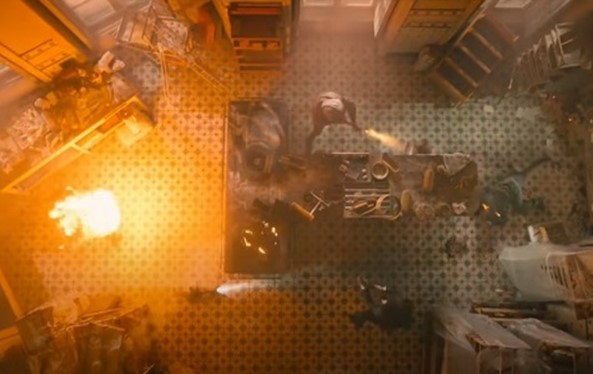
You know what’s cool? Some bitchin’ tunes. Across the three Guardians Of The Galaxy movies, James Gunn has rock songs to add pop energy to his comic book stories. It’s an effective tool, even if it feels obvious. Especially in the third movie, where the conceit of lead Chris Pratt’s tastes being stuck with 70s rock has been abandoned for “here’s a bunch of songs that James Gunn likes,” moving into the 80s and 90s and beyond, the alternative of the Gen X/Millennial that is now its own kind of classic rock. I’m within the far range of Gunn’s cohort and I definitely can appreciate a good needledrop of Spacehog’s “In The Meantime,” and Gunn soundtracks his biggest fight scene to the Beastie Boys’ “No Sleep Til Brooklyn,” a song both snotty and badass and very appropriate for his heroes. He uses the song for a slo-mo ominous walk from our heroes as they prepare for the fight, while the actual combat is filmed in “one take” and takes inspiration from comic splash panels, slowing down for tableaux-esque poses before returning to bludgeons and slashes and shocks and shots. There are a bunch of cyborg mutants to destroy and Gunn embraces the opportunity to spill their viscera (he is a lot more circumspect with his human villains, the PG-13 rating strikes again). This is a compendium of cliches (and largely CGI at that) but they’re executed with panache and a desire to pull the viewer into the violence. It’s pretty cool!
Gunn’s increasingly chickenshit sensibilities assert themselves elsewhere though. Pratt and his crew of Guardians have to get something from an evil geneticist called the High Evolutionary, a guy who as we learn via flashbacks created/tortured the shit out of fan favorite Rocket Racoon. They discover the HE has created an entire species of intelligent life on its very own planet, goof around with them for twenty minutes or so and then find out these nameless schmucks are slotted for destruction for not being genetically perfect. “Who would kill an entire planet?” a Guardian asks, and the answer is James Gunn, the guy who introduced these characters solely so they can be nuked for cheap pathos in his Disney movie, a movie with zero interest in engaging with this contradiction. It would rather spend time on Rocket finally confronting his old nemesis but refusing to kill him because, in the space racoon’s words, “I’m a freaking Guardian of the Galaxy.” Murdering an ecocidal maniac who kills entire planets is apparently beyond the pale, even though it would definitely prevent more of that planet-killing everyone was so outraged about — instead of the banality of evil, we have the fraudulence of principle. Fuck that guy! But killing the High Evolutionary would also prevent him from appearing in future Marvel movies and of course Gunn can’t shut that door. The High Evolutionary will be able to kill again, just like how Gunn has jumped ship from Marvel just to make the same kind of bullshit movies in a different comics universe. The movie ends with another pumping rock song, Florence and the Machine’s “Dog Days Are Over,” but that can’t overcome the deeply uncool denial of violence and cravenness here. Isn’t Gunn too old for this shit?
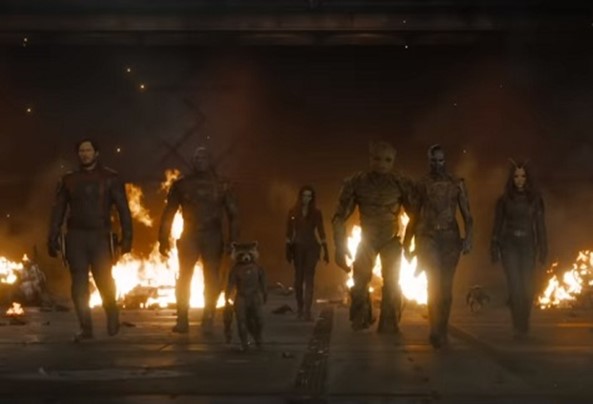
Denzel Washington first started Equalizing dudes in the Boston area when he was almost 60 years old. He’s pushing 70 in the third installment of his action series. Not so coincidentally, he is severely injured in the opening sequence at an Italian drug dealer’s mansion (he is still able to murder nearly everyone there though) and spends much of the movie sitting in comfortable chairs and hanging out at Mediterranean coastal cafes as he recovers and makes connections with friendly locals. Wait a minute — an attractive and unattached person leaves the U.S. and finds fulfillment and maybe even romance in a laid-back and golden-hued Italy? Denzel is Under The Tuscan Sunning us!
And this emphasis on comfort and chill vibes works surprisingly well. Like the previous Equalizers this is directed by Antoine Fuqua and Fuqua’s shortcomings as an action director are balanced by his comfort with Washington and how he is willing to devote time to his avenging angel just hanging out with various friendly folks. This is very pleasant on its own, Washington is a ridiculously charming actor, but the build-up of these sunny vibes makes the clouds coming over Washington’s face at the arrival of more drug-dealing goons that much more ominous. The problem with John Wick’s lore is how it marks time between the violence we know is coming; the alleged righteousness of Guardians’ ass-kicking collapses into incoherence. Here, Washington’s anger is simple but straightforward and Fuqua understands that his glower at the dudes he is preparing to own is as important as the ownage itself, that the space for us to anticipate the violence is as enjoyable to linger in as a shady seat at the cappuccino bar on the Amalfi coast.
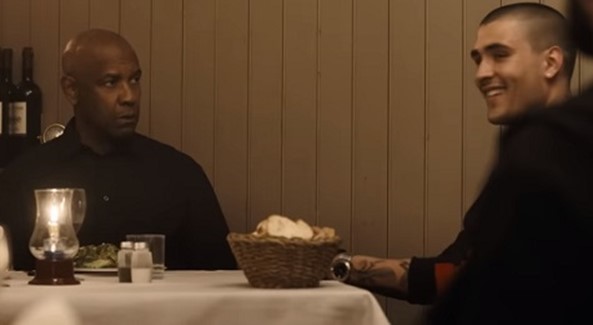
Does that sound sadistic? I suppose it is. It’s in line with what Washington does to the bad guys (and there is no nuance at all with these dudes), snapping limbs and stabbing throats after they interrupt one of his meals. Later on he is barely seen as he stalks through the lead drug dealer’s mansion, at one point decapitating a goon and leaving his head to fall off his shoulders in a horror-movie surprise for a fellow merc who is then merced himself — this is a recurring motif in the Equalizers, how Washington is closer to Jason Vorhees than John Rambo. He dispatches the chief villain by feeding him a bunch of his own drugs and then slowly stalking him through the streets of Naples as he overdoses, foaming at the mouth and agonizing as his body revolts (also, he gets hit by a car). It is grim and nasty and frankly pretty fun to watch. Denzel got his ass good! Fuck that guy!
This is also willfully incoherent as a text — Washington learns to appreciate the small things in life and in order to keep doing so brutally murders dozens of people — and Fuqua can rely too much on quick cutting and dim lighting in his action. But as I age I have more appreciation for the Equalizer’s ugly clarity, the blunt effectiveness of an old dude kicking ass in between pleasant naps. Both of these things evoke visceral pleasure, perhaps it isn’t wholesome but I’ll take those mean and pandering thrills over corporate equivocating or soulless mechanics. These films chasing cool ultimately feel like they’re wasting my time, and I’m not getting any younger.

